Growing kohlrabi is an asset to your health; the entire plant is edible and nutritious. Kohlrabi is a cool weather brassica with a bulbous stem that has a mild, sweet, and earthy flavor. It’s unusual looking, but as it grows you’ll be delighted with how it tastes!
Learn how to grow cabbage for another delicious cool-season brassica in your garden!
Contributed by Jodi Torpey, author and Master Gardener.
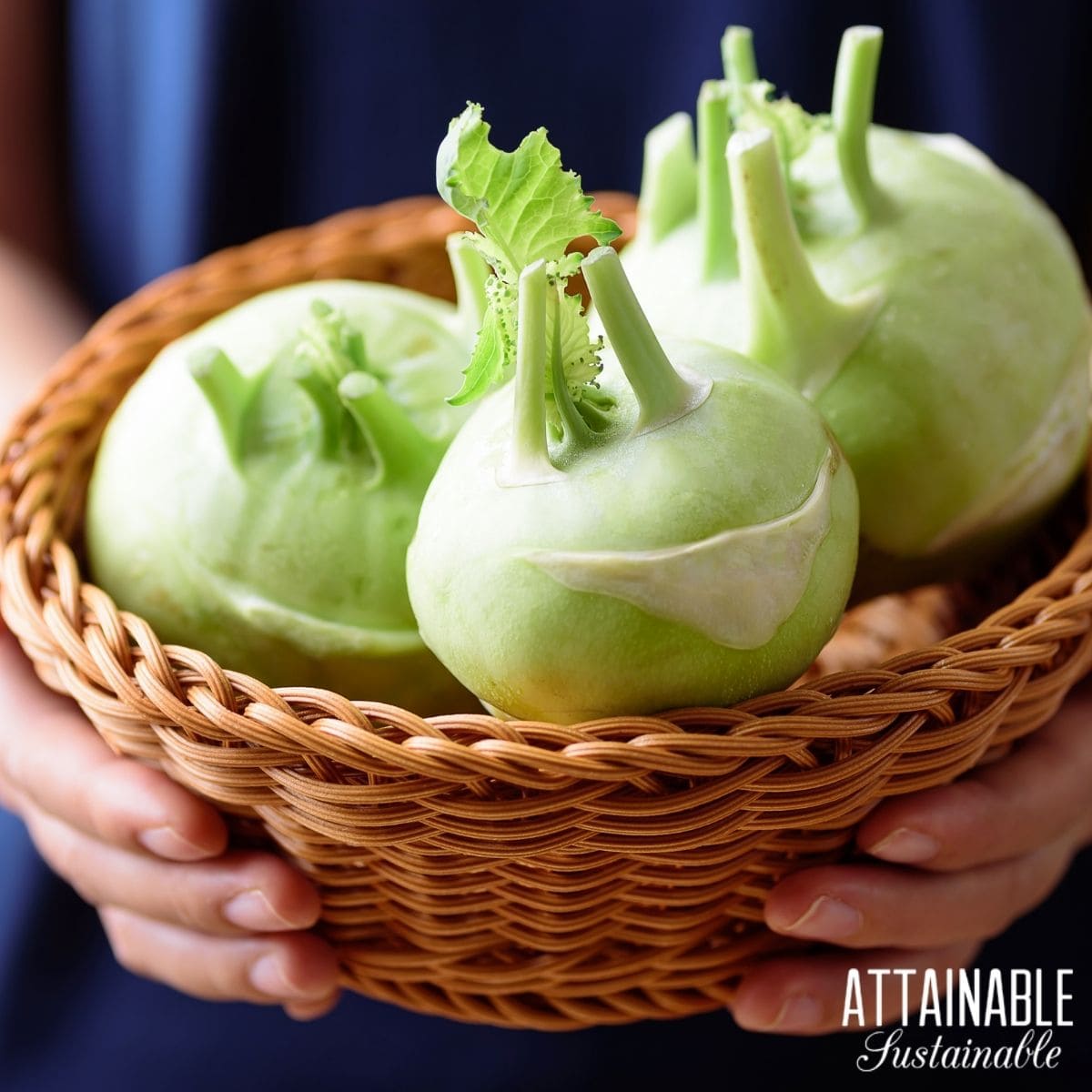
Kohlrabi is delicious eaten raw, right out of the garden!
Growing Kohlrabi
Kohlrabi is an odd-looking member of the turnip family. The bulbous stem grows above ground with leaves poking straight out and up. Some people avoid planting kohlrabi because it’s also known as “cabbage turnip” and they’re unsure what the bulbous stem will taste like. But once they taste the mild broccoli and celery root flavor, they always wish they planted more.
What do you get when you slice into one of these turnip-like stems? The interior is white and sweet and the leaves taste a bit like collard greens. Besides its mild flavor, kohlrabi is loaded with potassium and vitamin C.
Kohlrabi (Brassica oleracea) is a cool-season crop and a member of the Brassica family that grows in early spring and late fall. Plant as soon as the soil can be worked early in the season. Choose the varieties that match the timing for planting in your region. There are some varieties that mature in around 40 days. Mature plants can tolerate some frost.
Kohlrabi isn’t picky when it comes to soils, but you’ll get better-tasting bulbs if the soil is amended with compost before planting. Cooler temperatures enhance the stems’ sweet taste so plant as early in the season as possible to avoid having the bulbs maturing when temperatures turn hot. Bulbs can turn woody in warmer weather.
Grow Some Greens!
Ready to grow fresh greens, no matter WHERE you live? Sign up for my
FREE quick-start guide and start growing some of your own food!
For an extended harvest, plant every 2-3 weeks; then start again in late summer for a fall harvest.
New to gardening? Limited on space? The 5-Gallon Garden gives you the skills you need to grow food in the space you have. Get started with your garden today!
Kohlrabi varieties for home gardens
The two types of kohlrabi include green and purple. The green type features a green bulb, green leaves, and pale green veining; the purple type has a purple bulb with green leaves and purple veining. Here are some of the newer kohlrabi varieties of each:
Green kohlrabi
Beas is a new type of whiter kohlrabi with a delicate sweet flavor; 42 days to maturity.
Delicacy White is unusual because this variety holds up to cold temperatures and doesn’t lose its tender heart when allowed to grow apple-sized; 60 days.
Korist is a fast-grower, but holds onto its sweet succulent interior without becoming tough; 48-55 days.
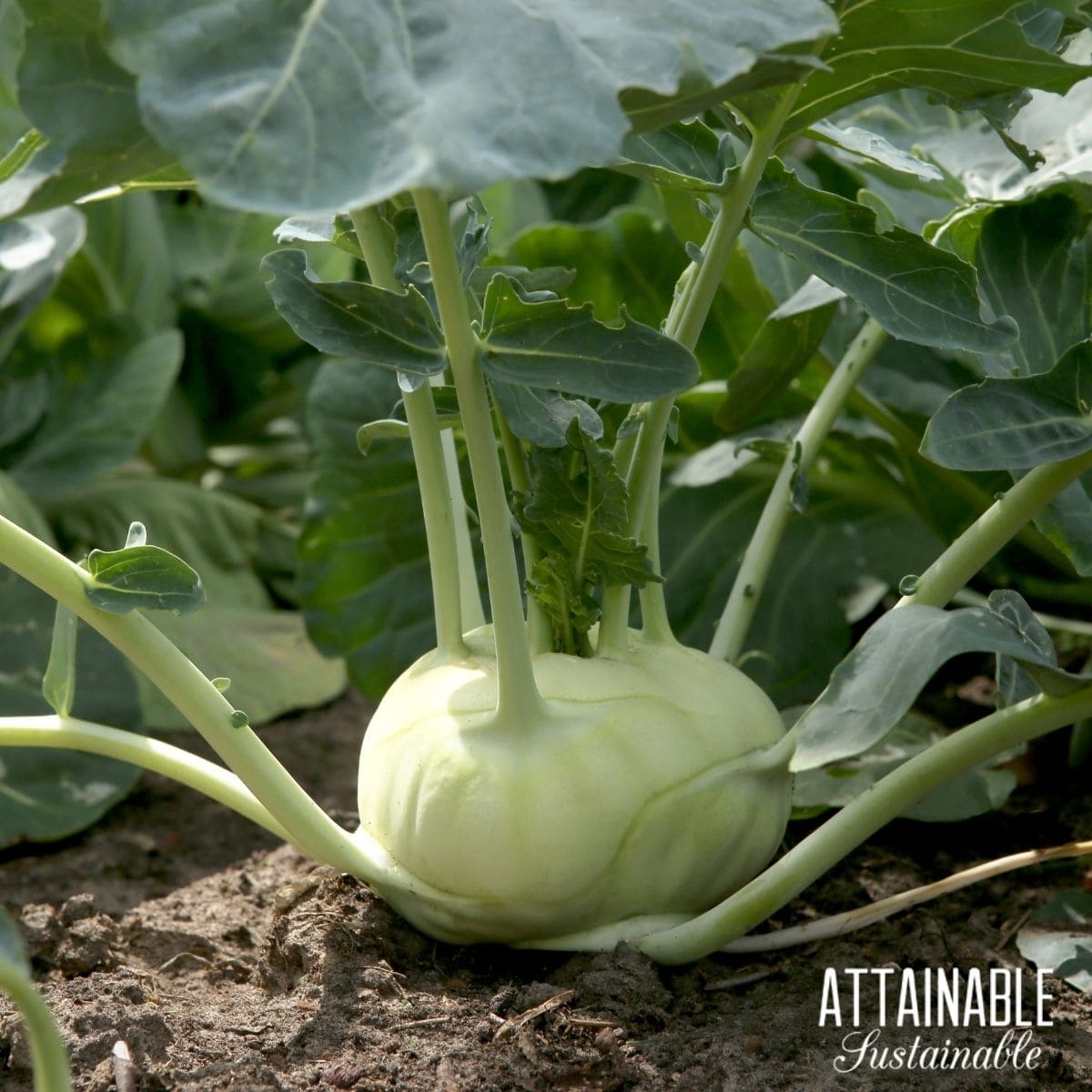
Green kohlrabi
Purple kohlrabi
Delicacy Purple is similar to Delicacy White except it features a brilliant purple exterior; 65 days.
Blaril is another colorful kohlrabi that was bred for harvesting in late summer to fall and can grow very large without compromising its taste; 65 days.
Kolibri is a little different from round bulbs because these grow into a flatter globe with a sweet, juicy, and crunchy interior; 50 days.
(Head over here for even more fun purple vegetables to grow!)
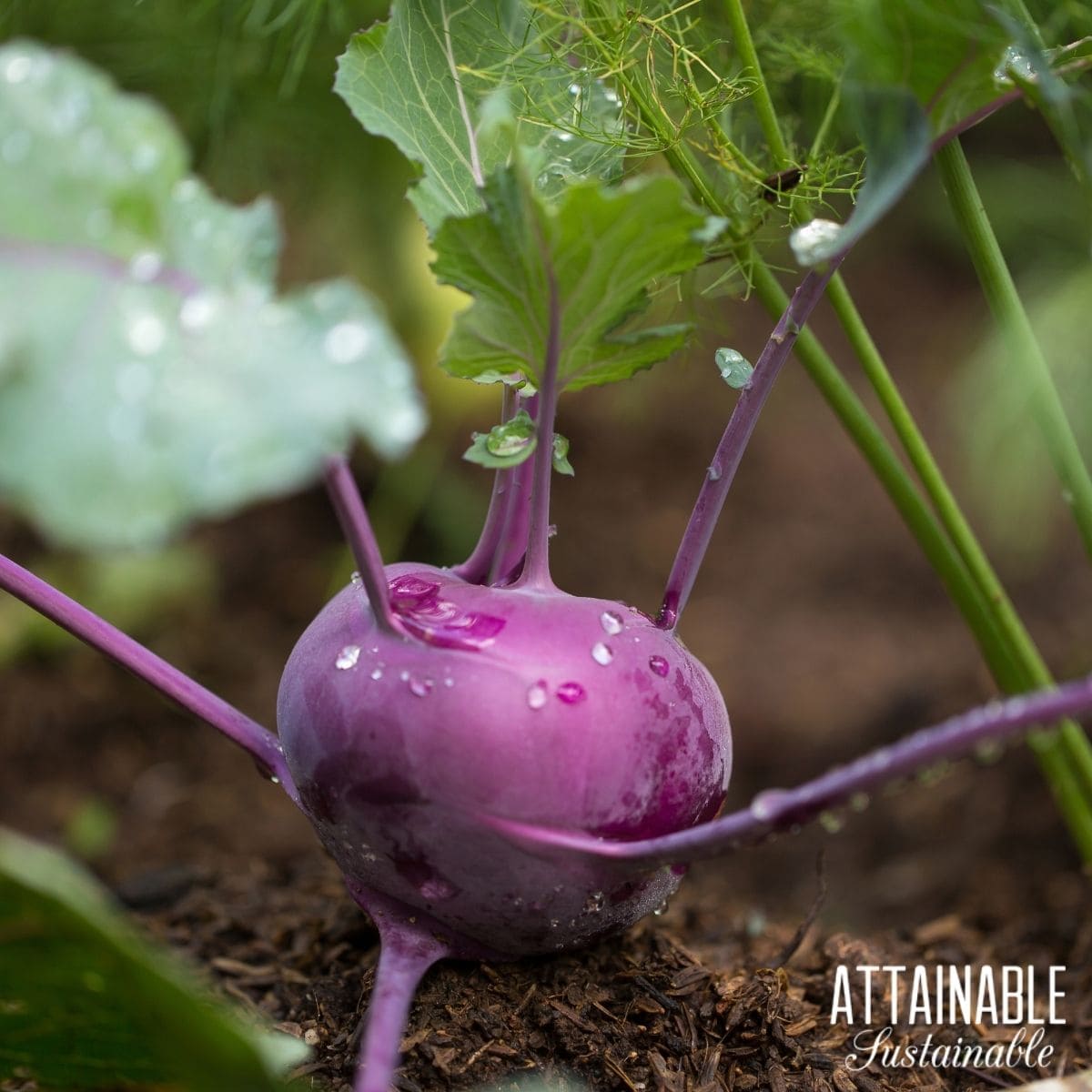
Purple kohlrabi
How to plant and grow kohlrabi
You can start kohlrabi plants from seed indoors or in a cold frame about 4-6 weeks before you plan to transplant them into the garden. Wait to transplant in the garden until the soil has warmed and nighttime temperatures are a reliable 40 degrees.
An alternative is to direct sow seeds into the garden or buy transplants from the garden center.
If planting kohlrabi seeds in the garden, wait until after the last frost and when soil temperatures reach between 55-75 degrees. Plant seeds about ¼-inch deep and about 1-inch apart; space rows about 12-18 inches apart.
Once seeds germinate and plants grow to several inches tall and have two sets of true leaves, thin the kohlrabi plants so they’re spaced 3-8 inches apart. You can transplant the thinnings to another part of the garden, which will help extend your kohlrabi growing season.
For the tenderest and tastiest kohlrabi bulbs, focus on rapid growth. After thinning, sidedress with a well-balanced dry fertilizer. Scatter fertilizer on both sides of plant rows, about 6-8 inches away, and water in.
Cultivate lightly, if needed, and avoid damaging the delicate roots that spread just beneath the soil surface.
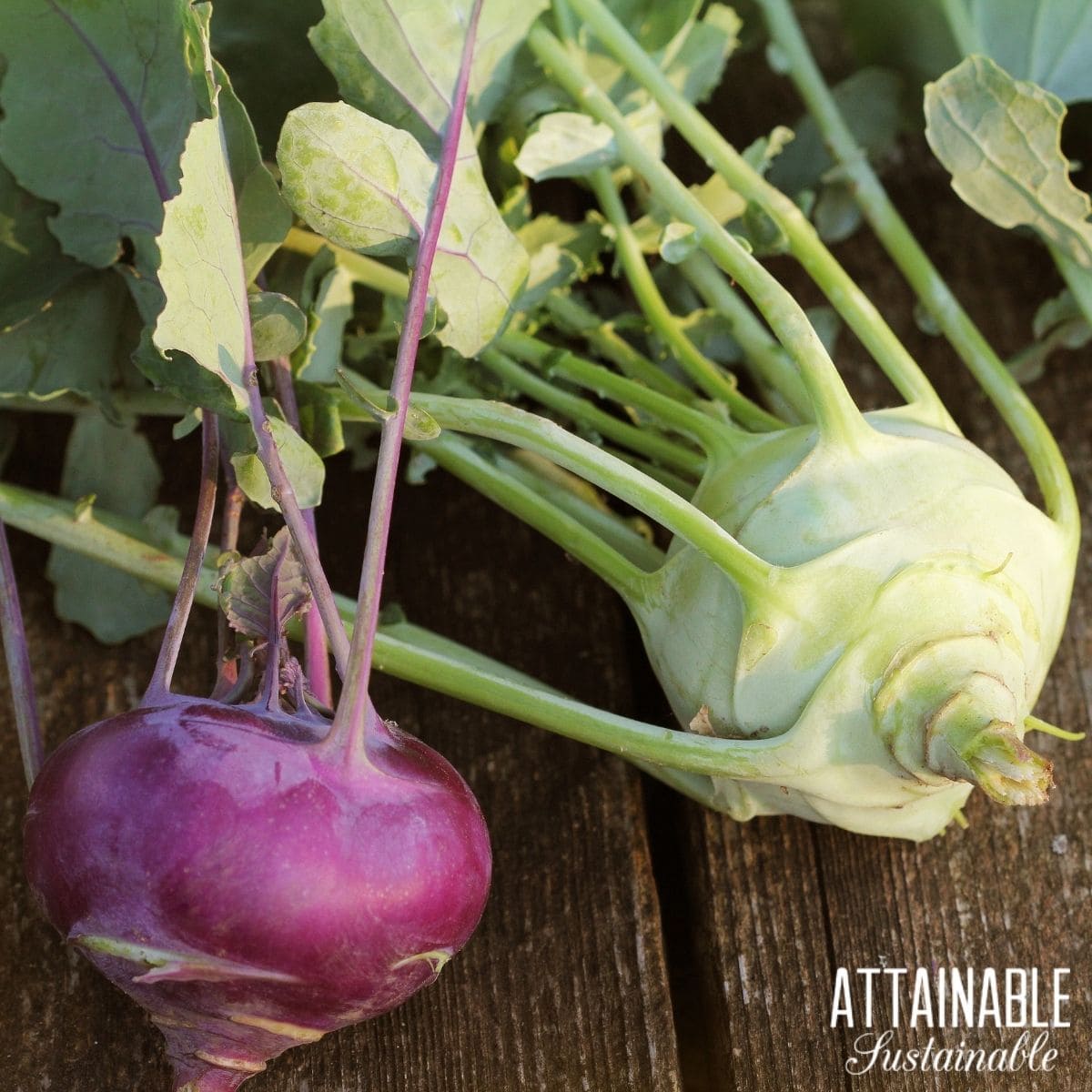
Kohlrabi bulbs form above ground on a sturdy stalk.
Requirements for growing kohlrabi
Soil requirements
Like other Brassicas, kohlrabi prefers rich, loamy soil that drains well. Amend the garden bed with plenty of organic matter, like compost or well-aged manure.
Light requirements
Kohlrabi plants grow best in full sun conditions (6-8 hours per day), so choose a nice sunny location in your garden.
Fertilizer and water requirements
Kohlrabi has low fertilizer needs, especially if the garden soil was prepared with compost or other organic matter before planting.
Water is the most important consideration for growing kohlrabi. Place a soaker hose before adding mulch and keep the soil moderately moist at all times. Don’t let the soil dry out or the bulbs will become tough instead of tender and sweet.
To maintain even soil temperatures and to hold in moisture, add a thick layer of organic mulch around plants when they’re several inches tall.
How to prevent kohlrabi plant problems
Flea beetles that leave small holes in the leaves can be prevented by covering kohlrabi plants with floating row cover. Use the covers right after planting and make sure the covers are tied down tightly so insects can’t get underneath.
Cabbage loopers leave large holes in leaves, but they can be prevented with collars on the soil around plant stems to prevent eggs from being laid on the soil. Pick off any caterpillars on the plants and drop them into a bucket of soapy water.
Cutworms can ruin a crop of new transplants by cutting off stems at the soil level. Protect new plants with empty juice cans or cups, both ends removed, placed over plants.
Growing kohlrabi in containers
You can grow kohlrabi in containers, but you might not have a big crop for harvesting. Use the largest container you can and fill it with potting soil meant for container growing.
Place transplants 4-6 inches apart and keep up with watering. Add mulch when plants start to grow. Add a liquid soluble fertilizer to the watering can every few weeks to encourage good growth. Harvest while bulbs are still small and tender.
How to harvest kohlrabi
Make a note on your calendar for when to start checking kohlrabi bulbs based on the number of days to maturity for the varieties you planted. This method will prevent you from waiting too long to harvest. Waiting for large bulbs will lead to kohlrabi that is stringy and less flavorful.
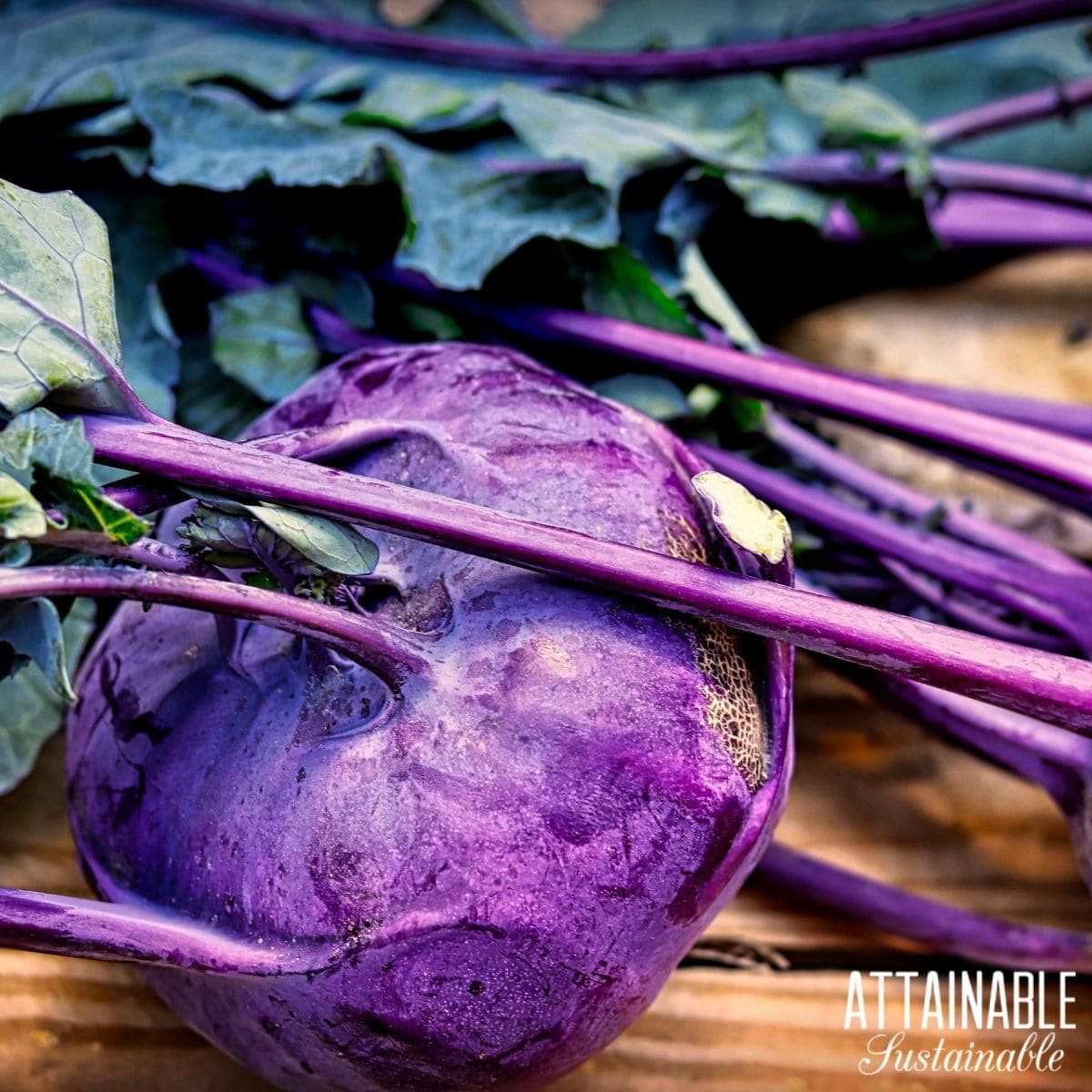
Purple kohlrabi makes a beautiful harvest.
Cut the bulb/stem just above the soil line while still young and tender. Allow bulbs to reach golf-ball size and harvest at 1 ½-3 inch in diameter.
Using kohlrabi in the kitchen
Both the bulblike stem and kohlrabi greens are edible. Store them separately and use both as soon as possible for the best results.
To use in cooking, peel the bulbs or leave the skin on, chop and cook into soups, stews, and stir-fry meals; the leaves can be used like collard greens, steamed, boiled, or sautéed like spinach.
Consider using kohlrabi in place of turnips in recipes, such as roasted, boiled, and mashed, or use raw for extra crunch in salads.
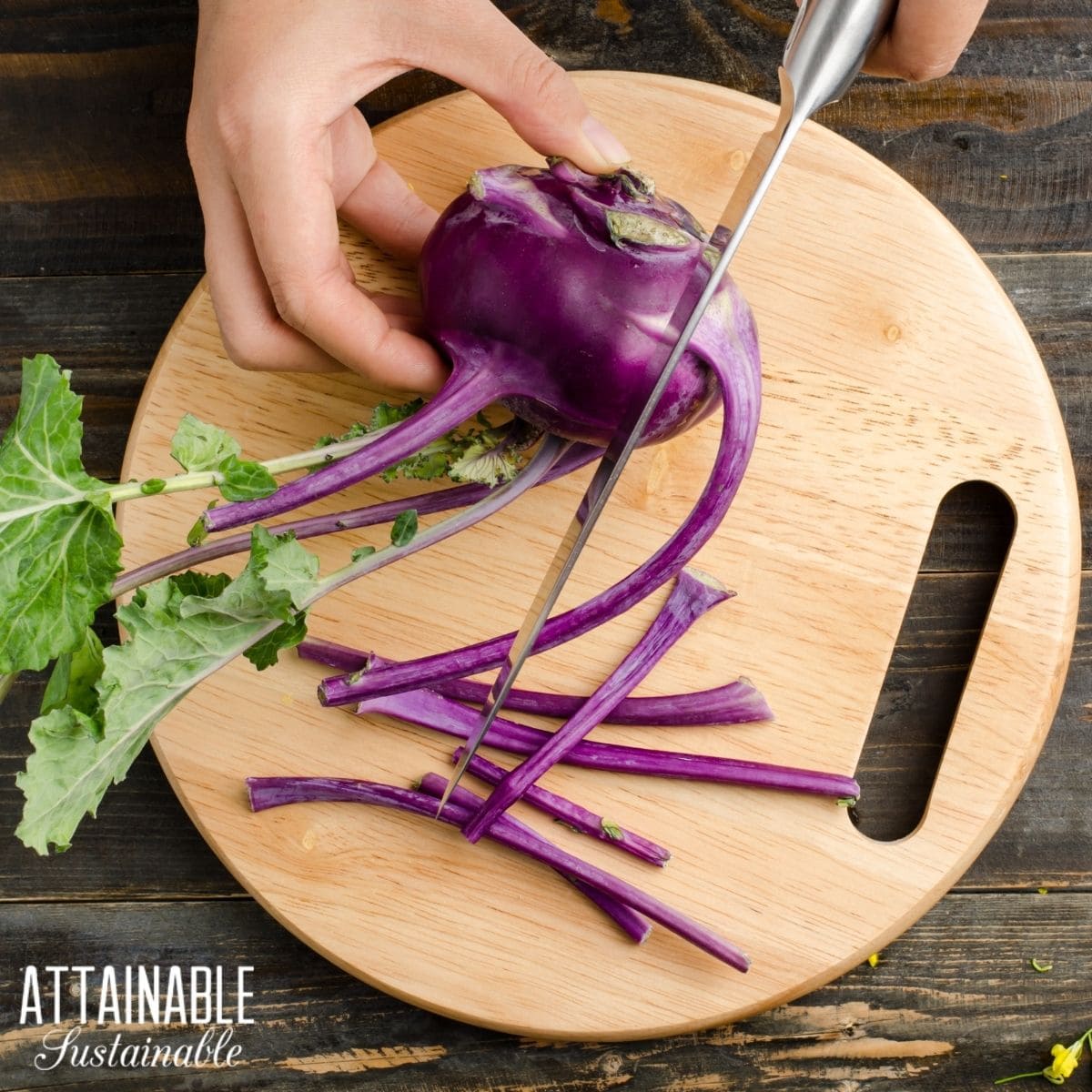
Eating kohlrabi
How to save kohlrabi seeds
Kohlrabi plants are biennial, meaning they won’t flower until their second season. Plan to save seeds from several plants by overwintering plants in the garden or digging up plants to store in a garage, root cellar, or shed and replant the following spring.
After these plants flower, allow seed heads to dry on the plants and collect the seed pods. Remove the seeds and store them in an airtight container in a cool, dark, and dry space.






